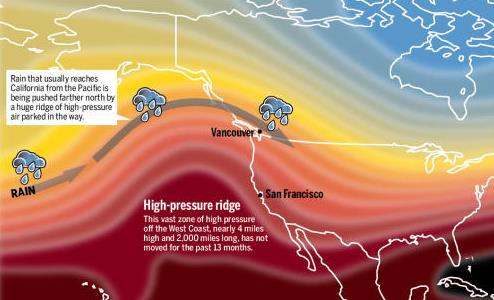
With the Ridiculously Resilient Ridge of 2012/2013 formed in the north pacific, the state of California experienced its driest 13 months in 165 years of records. Up until February/March of 2014 the state was in a severe drought.

Then, in February we had a significant rainfall event that thankfully restored most of our reservoirs to a manageable level. However, this late winter/early spring rain, after a year of bone-dry drought created an explosion of late-season grass growth.
http://gacc.nifc.gov/oscc/predictive/outlooks/myfiles/assessment.pdfFires this spring will exhibit behavior seen more typically in fall. (Even after the recent rains, several burn projects last month have shown a high of consumption of fuels.) Expect fires to grow rapidly in continuous fuels, even during weather conditions not normally associated with fire growth. More fires will also be possible in alpine areas as melt out will be much earlier than average this year.
Indeed, we have already had a series of wildfires in the last 2 days that have caused over 30,000 evacuation notices to be sent, this one today, more serious than the event yesterday, as these forced evacuations have immediately been issued.
http://www.reuters.com/article/2014/05/14/us-usa-wildfires-california-idUSBREA4D00A20140514More than 11,000 homes and businesses were ordered to evacuate on Wednesday and power was cut off to many residents as a wind-lashed wildfire roared out of control in San Diego County, authorities said.
This is just the start, the projected heat intensity and drought increase for the state of California is extremely dire. With a combination of 3 years of intense drought, with the last year being the absolute driest on record, a significant amount of tree mortality has produced vast areas of dry fuel for wildfires.

